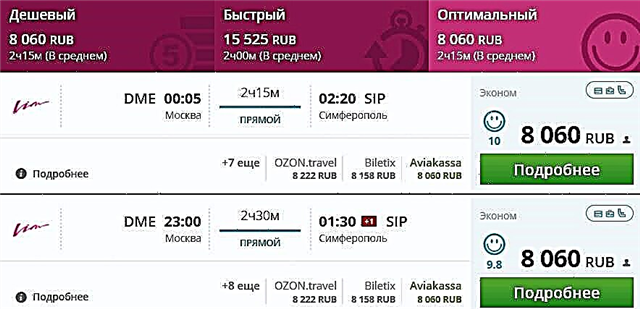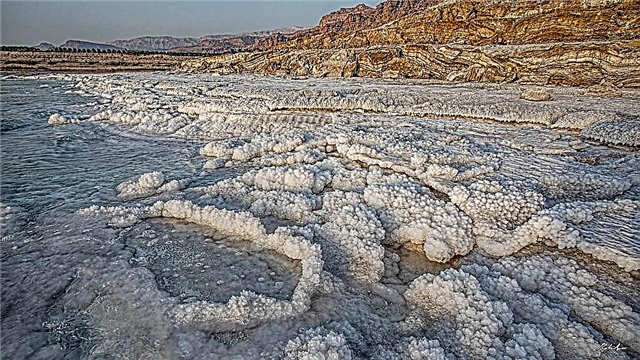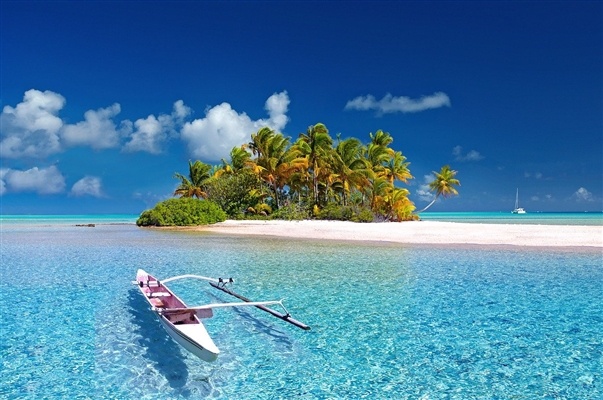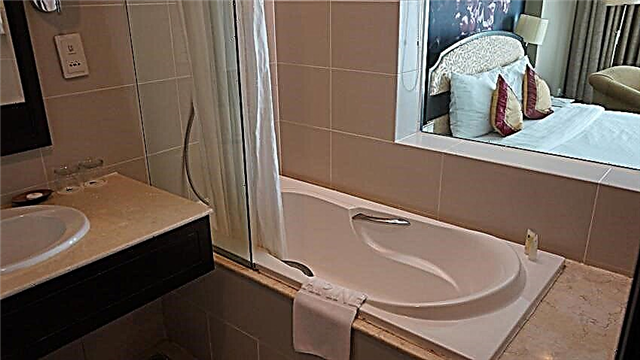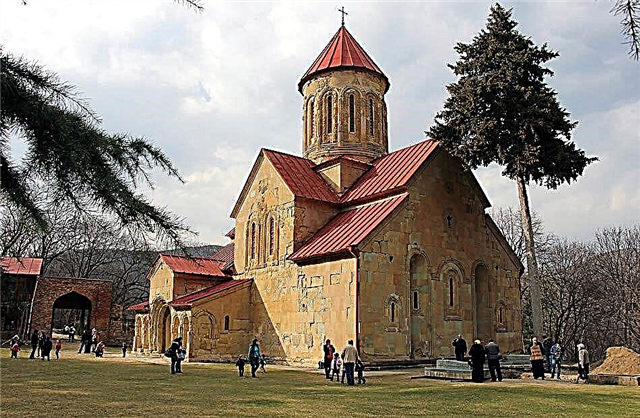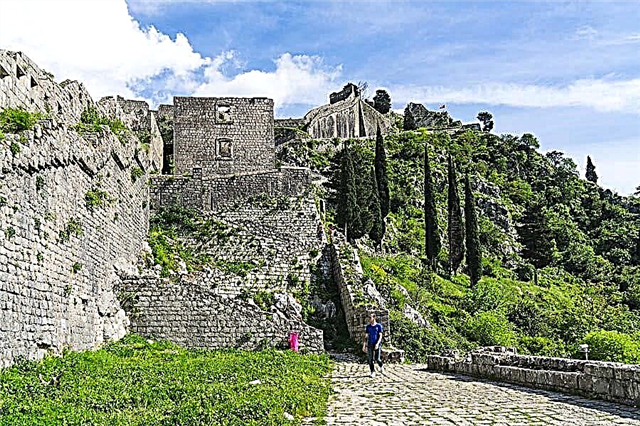Where to go and what to see in Montenegro on your own? In this material, we have collected all interesting and beautiful places that are worth seeing for tourists who love active walks on their own and excursions in Russian with a fascinating guide.
* Cover photo by Daniel Hering, Durmitor National Park.
A tiny country on the Balkan Peninsula has become a favorite vacation spot for numerous tourists from all over the world due to its unique nature, mild climate, warm sea and numerous attractions. The sights of Montenegro are national parks, ancient fortresses, ruins of ancient buildings and a rich history. The second name of the country in Western European languages is Montenegro, "Black Mountain". How majestic and mesmerizing it sounds! And not without reason, because the Montenegrins were the only Balkan people who did not submit to the Turkish yoke. We will tell you what to see from the sights in Montenegro, guide you through the cities and regions of this country, to places popular with many tourists, in general, where to visit and what to see.
Citadel (Budva)

The most important sights of Montenegro are headed by an old fortress, preserved from the 12th century, the first mentions date back to 840. Located in the Old Town of Budva, we advise all beginners to first of all visit this place and visit the paid part of it. The citadel was built on the site of a large fort that served to repel the attacks of the Turks in the 9th century. The walls of the fortress, the gates and the remains of the Church of St. Mary (15th century) have been preserved. Several buildings have survived on the territory of the fortress, there is a library, a restaurant and an observation deck (excellent photos are obtained in the evening). Entrance ticket - 3.5 euros.
When it comes to restaurants, many locals like to sit indoors, but we advise you to book an outdoor sheltered table. Closer to the weekend, it is worth taking care of the places in advance. If you are tired, you can go down to the coastline and sunbathe on the sun loungers, the water is clear.
- In addition, we post a beautiful video review about this wonderful city:
Museum of Local Lore (Herceg Novi)

The collection of the museum began to collect since 1949 in 4 directions: historical exhibits, archaeological, ethnographic and collection of icons. The museum has a botanical garden with a collection of Mediterranean subtropical plants. The most attractive of them are the most diverse types of mimosa, in honor of which the city "Festival of Mimosa" is held in March. The ticket price is 1.5 euros.
Fortresses of Herceg Novi

Historical fortresses, erected in the 15-19 centuries, have become the main attractions of Montenegro. Three fortresses: Arts, Prevlaka and Mamulalocated in the strait in front of the city, are well preserved and have not even been restored. Forte Mare and Citadel are located by the sea in the south of the country. In the north - Kanli Kula, Spagnola, Sat Kula... All of them were defensive, but retained their original appearance. Some were reconstructed and served other functions, such as a prison or a concert venue.
All the buildings described above are required for viewing. The easiest way to reach them is to get there on your own and take a fascinating historical walk. We advise you to go without children, this is facilitated by the difficult road and constant descents and ascents.
Aqueduct (Bar)

From the water conduit built in the 17th century (it was the main artery for supplying water to the city from Mount Rumia) today there is a bridge of 17 arches and pillars. The roughly hewn stones from which the bridge was built give it grandeur and grandeur. It fits perfectly into the picturesque area of the city and looks truly ancient. The bridge was significantly damaged by an earthquake in the 70s of the last century, but was quickly restored (the entire former appearance was recreated except for ceramic pipes through which water flowed) and became a popular tourist and historical site, despite the fact that there are practically no residents in the Old Bar. ...
There are frequent buses to Bar from Budva, the fare is 5 euros. Most tourists take excursions, prices for a walk as part of a group start at 25 euros.
Aquapark (Becici)

What to visit in Montenegro with children? Of course, the largest water park on the shores of the Adriatic, which is located 3 km from Budva. It is located on an area of 4 hectares and can accommodate 6 thousand people. Adults have 7 slides at their disposal, and more than 50 rides for children. “For fans of extreme sports, we can recommend the Great Kamikaze slide. Its height is 26 meters, and the angle of inclination is 75O". there is a mini water park for kids. Entrance € 18 for adults and € 15 for children.
Cathedral of Christ's Resurrection (Podgorica)

The largest Orthodox church in Montenegro is located on the banks of the river and was built under the patronage of Russian Patriarch Alexy. He also blessed the first stone. Many donations were made by the residents of the country. The temple was built in 6 years. It has very beautiful architecture, a huge dome, 14 bells. 5 thousand people can be present in the temple at the same time. The interior decoration is striking with frescoes on the theme of the Old and New Testaments.
Flower Island (Prevlaka)

One of the most beautiful places in Montenegro is Prevlaka island (translated from Montenegrin isthmus), on which plants bloom in great abundance, for which it received its second name. Once there were even more of them: palms, olive trees, many plants and flowers grew, but during socialist times and during the Balkan war, most of the vegetation was destroyed. A historical site has been preserved on the island - the ruins of a 15th century monastery. Gradually, the monastery is being reconstructed, the Trinity Church is already working, cells have been built, in which only three monks live permanently so far.
It is easy to get there by any means of transport: bus, car, boat from the pier of Tivat.
Ostrog monastery
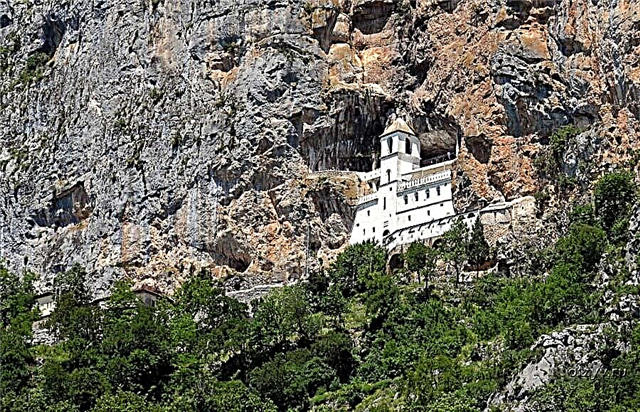
Located 15 km from Danilovgrad at the base of the Ostrog ridge at an altitude of 900 meters above sea level. The monastery was built in the 17th century and named after the miracle worker Vasily of Ostrog, whose relics are located here. This is the place of many Orthodox pilgrims. There are many stories about people healed by Saint Basil, which is why today there are many visitors from different parts of the city. Many come to be healed with the problem of infertility.
The cost of excursions in Russian is from 25 euros. You can get there by taxi, if you go from Budva, the road will cost about 70 euros.
In a separate article, we have selected the best hotels in Montenegro for family accommodation.
Gornya-Lastva

A small village near Tivat attracts the interest of tourists in the summer by hosting workshops on architecture of the international society Expeditio and a summer festival. Cultural traditions, local folklore, national cuisine, music, round dances, participation in ancient games - all this is interesting from what you can see in Montenegro. "If you happen to be at the festival, be sure to go to the old mill for dinner."
Library (Budva)

The collection of books is located in the old fortress, therefore, entering the hall, you find yourself in a medieval room resembling a palace hall. The library is already 140 years old and it is interesting not only for the country's largest book fund, but also for the adjacent archaeological museum and art gallery. "In the reading room, you can sit down at a desk or in an armchair and take a picture."
Island Gospa od Skrpela

The island belongs to the objects that any tourist must see in Montenegro. The fact is that this island is man-made. Here in 1452 on the reef two sailors found the icon of the Mother of God.For 200 years, old ships were flooded near the reef, and then every ship passing by had to throw stones at this place. This is how an island was formed, in the area of which every visitor makes his own contribution - throws a stone. The island was created for the construction of a church in honor of the Virgin Mary. Entrance to the church - 1 euro.
Fortress of St. John (Kotor)

The peace of the medieval city is guarded by this ancient fortress. For several millennia, until the First World War, she was in the ranks. And only now it has ceased to fulfill its function, but has become a place on a tourist route. You can get to the fortress along the serpentine and stairs, on which there are about 1500 steps. "Therefore, when deciding to climb, wear sneakers and stock up on drinking water."
We recommend that you set aside at least one day for the Bay of Kotor. Be sure to take a ride on the two-story hop-on hop-off bus on the roads along the bay. Don't worry, he makes several walking stops. Here you will discover Roman mosaics and the beautiful coastline of Biova Coola. During the trip, we will definitely use the audio guide (in Russian, Spanish, English, other languages). You can catch a bus from the port of Kotor every 30 minutes. The ticket price is 17 euros.
Naval Heritage Museum (Tivat)

We suggest what to see in Montenegro on your own for lovers of military topics. This museum consists of a large submarine, which anyone can enter and see its interior, and the museum itself, located nearby. Near the facade you can see old cannons, on the ground floor - a collection of naval weapons and diving equipment. On the second floor, all the exhibits about the training sailing ship "Yadran". The ticket price is 5 euros.
Blue Cave (Herceg Novi)

The nature of Montenegro is good not only in nature reserves. This cave has become one of the landmarks of the whole country. If you get to this place before lunchtime, you will see the famous blue glow for which the cave is famous. The height of the vaults of the cave is about 25 meters, so a boat can easily enter here. They even allow tourists to swim and look for pirate treasures, rumors about which were spread by the locals.
Republic Square (Podgorica)

This place occupies 15 thousand square meters. meters, is the largest area not only of the capital of Croatia, but of the whole country. At the beginning of the 20th century, it was built as a market one. During the existence of Yugoslavia, the square was named after King Alexander 1. And since 2006 it has become the Republic Square. The square houses the Town Hall, the National Library, a fountain and many offices and restaurants.
Monument to V. Vysotsky (Podgorica)

Among the sights of Montenegro, there was a place for a monument to the legendary Russian bard and actor, because he dedicated his great poem to this land, in which he regretted that Montenegro did not become his second homeland. In the country, Vysotsky was on tour twice. The monument stands on the banks of the Moraca River near the Moskovsky and Millennium bridges.
Millennium Bridge (Podgorica)

In honor of the end of the millennium, the Croats decided to build a bridge with a length of 140 meters, a width of 24 meters and a pylon height of 60 meters. The bridge connects the center of the capital with the new city across the Moraca River. It was opened in 2005 on State Day and has become a popular tourist destination.
National Theater of Montenegro (Podgorica)

Theatergoers will also find what to see in Montenegro from cultural sites and not only. And even though this theater is still the only professional one, it continues the theatrical tradition of the former 5 theaters that have not survived as a result of historical changes. In the late 80s, the theater building was completely burnt out as a result of a fire. Only after long 8 years did it open its doors. Every year it is visited by about 50 thousand spectators, including Russians.
Indeed, one of the best troupes in Montenegro plays here, many come here purposefully to enjoy a cultural evening.
All upcoming events can be viewed on the official website: https://cnp.me
Sculpture "Dancer from Budva"

Included in the most famous sights of Montenegro, it is a symbol of the resort and recreation in the country. The graceful ballerina attracts tourists like a magnet. The history of the monument began thanks to a legend according to which the sailor's bride, waiting for him from the sea, danced on the shore every day. The beloved never returned, and she died. This is how the statue became a symbol of devotion and great love.
Lovcen (Cetinje)

The best places in Montenegro are here, on Mount Lovcen and in the national park of the same name. The whole country is visible from the mountain, and there is also a museum of the ruler of Montenegro, Petar II Njegos. On the slope of the mountain there is a protected area with lush vegetation, natural pools and the purest healing air. It is not for nothing that a balneological hospital functions here, where pulmonary diseases are treated. Entrance to the mausoleum - 3 euros.
Behind the mausoleum you will find a narrow path that leads to the observation deck. We recommend to visit here in the evening, the photos are very beautiful. As for the ascent, any tourist can overcome it. It is cool at the top and the winds are constantly blowing, be sure to take a windbreaker. We advise you to visit this place with an excursion, since it is difficult to get here on your own, if only by a rented car.
Tivat city park

This park is registered in all tourist routes when visiting Tivat. The park itself is unremarkable, except for one thing: the largest botanical garden on the South Adriatic coast is open here. It was founded in 1982 by the commander of the fleet, the admiral. The captains of all the ships who came here from different countries were supposed to bring here seeds or seedlings of plants. Recently, the park has been intensively updated.
Old Olive (Bar)

This tree is recognized as the oldest in Europe, and some consider it to be the oldest in the world. The tree is over 2300 years old. Its crown is spread over 10 meters. Of course, the tree does not bear fruit, but it continues to live. It was recognized as a landmark in 1957. A whole memorial complex was built around, they conduct excursions to the museum, where they talk about the technology of olive oil production at the plant nearby, and offer a variety of souvenirs.



